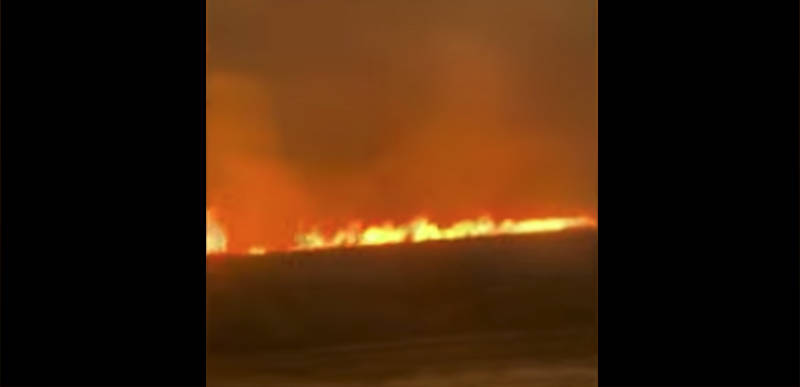The massive Texas wildfire, which Biden’s impeached DHS Secretary Mayorkas blamed on Climate Change, was actually caused by something entirely natural, strong winds.
Smokehouse Creek wildfire has the news (h/t: Our friends at LI)
According to Juan Rodriguez, a public information officer with the service, investigators have completed their investigation into the cause of the Smokehouse Creek fire and the Windy Deuce fire, Texas Standard reported.
“In this case, we saw winds that were over 60 and 70 miles an hour. And so when the winds are doing that, driving down the roadways, you can just see power lines just bouncing up and down,” Rodriguez said. “It’s bound to cause one of these power lines to fail or something like that. So, you know, one of them or some of them may have fallen or just got out just due to the sheer wind.”
In a statement shared Thursday, Xcel Energy acknowledged “that its facilities appear to have been involved in an ignition of the Smokehouse Creek fire.” PEOPLE has reached out to the energy company and Rodriguez for comments.
Strong winds blowing down power lines. Now I’m sure Mayorkas would claim that 60 to 70 mile an hour winds are caused by climate change, but that’s poppy cock.
West Texas is known for high winds between February and May. Here’s something on this from Marta Public Radio:
Springtime in West Texas has ample beauty – the bloom of a claret cup in the chaparral, the piercing song of a Cassin’s sparrow. But from February to May, we face the prospect of fierce winds. Sustained winds of 20, 30, 40 miles an hour are routine. Dust coats every surface.
The ordeal is tied to the global phenomenon known as the jet stream.
In summer, an area of high atmospheric pressure stalls over our region. Conditions are still – so still one yearns for a breeze. As summer lengthens, moisture moves into West Texas, and, with luck, brings the relief of monsoon rains.
But in winter, the pattern changes. From Canada, the jet stream moves south. It’s a ribbon of fast-moving air, flowing from west to east, high in the atmosphere.
It can bring winter storms to our region. More often, storms pass farther north – and what we get is wind.
Rick Hluchan is a National Weather Service meteorologist in Midland.
“That’s why spring is very volatile,” Hluchan said. “We have many, many systems that come through, sometimes once a week, where ahead of the storm system we’ll have a get a strong southwest wind, which is very dry, because it comes off the mountains in Mexico. Usually right behind that system, as it moves past, we’ll get a front in from the north, so the winds change to the north, and sometimes can be just as strong.”
Biden and Mayorkas hardest hit…

